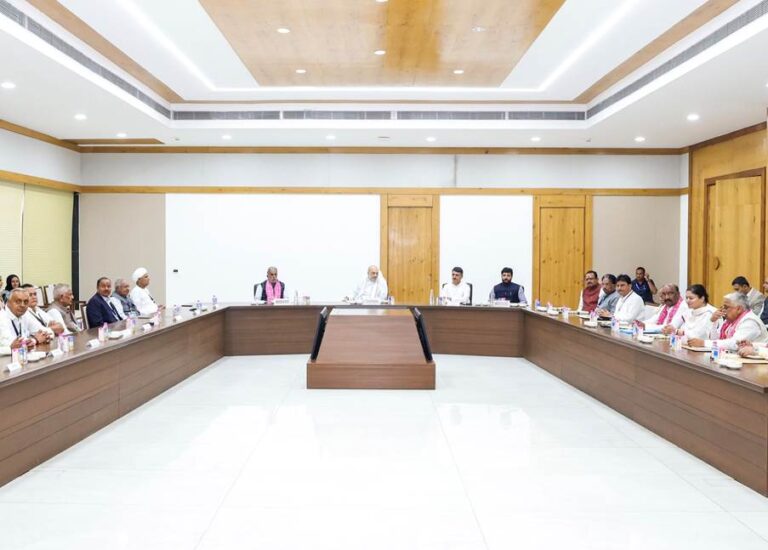

Authored Article by Dr.S.L.N.T.Srinivas,
Member, All India Authors Group,
Ministry of Cooperation, Govt. of India
HYDERABAD, AUGUST 09, 2025: The Telangana State Cooperative Apex Bank Ltd. (TGCAB) has emerged as a shining example of performance-oriented cooperative banking in India. In the fiscal year 2024–25, the bank recorded a phenomenal growth trajectory, reinforcing its financial robustness, institutional strength, and outreach expansion.
TGCAB reported a net profit before tax of Rs 115.36 crore, marking an impressive 63% increase from Rs 70.95 crore in FY 2023–24. This leap is a result of strategic interventions in credit expansion, fund mobilization, and operational efficiency.
The bank’s loans and advances portfolio surged by 31%, rising from Rs 12,974.77 crore to Rs 16,975.69 crore. This highlights the bank’s aggressive yet prudent credit deployment strategy, aligning with its commitment to serving rural and semi-urban cooperative societies, farmers, and small enterprises. The total business turnover also grew significantly, reaching Rs 24,971.95 crore compared to Rs 20,955.51 crore in the previous fiscal, indicating a growing trust among stakeholders and expanding market reach.
While deposits registered a marginal rise from Rs 7,980.74 crore to Rs 7,996.26 crore, borrowings surged by 38%, from Rs 8,888.35 crore to Rs 12,289.46 crore. This strategic borrowing was instrumental in funding the credit growth without compromising liquidity and risk management.
Sound Financial Metrics and Asset Quality
One of the most commendable aspects of TGCAB’s performance is the consistent excellence in asset quality. The Gross Non-Performing Assets (NPA) remained minimal, increasing only slightly from Rs 9.90 crore to Rs 10.75 crore. The Gross NPA ratio improved further to a low 0.06%, far better than the industry average, showcasing the bank’s prudent risk management and effective recovery mechanisms.
The Net NPA remained at zero, maintaining the clean record for another consecutive year. This demonstrates TGCAB’s strong internal control systems and credit monitoring frameworks.
On the regulatory front, the Capital to Risk-weighted Assets Ratio (CRAR) stood at 10.15%, comfortably above the minimum regulatory requirement, though marginally lower than the previous year’s 10.18%. This indicates the bank’s continued financial discipline and strong capital adequacy position.
The bank’s own funds increased from Rs 1,263.42 crore to Rs 1,624.04 crore, strengthening its capital base. Similarly, the net worth rose to Rs 1,358.26 crore from Rs 1,243.38 crore, underlining its long-term financial health and institutional sustainability. Notably, paid-up share capital grew to Rs 412.10 crore, supported by active member participation and government equity infusion, reaffirming the cooperative spirit.
Sectoral Focus, Challenges, and the Way Forward
In terms of sectoral growth, TGCAB’s gold loan portfolio witnessed a 40% rise, growing from Rs 1,070.43 crore to Rs 1,498.76 crore. This expansion in the retail lending segment indicates the bank’s agility in catering to short-term household credit needs and deepening financial inclusion.
There were some minor shifts in key ratios. The CASA (Current Account and Savings Account) ratio dipped slightly from 14.88% to 13.64%, while the Credit-Deposit (CD) ratio rose steeply from 162.58% to 212.30%. Though the high CD ratio signals an aggressive lending push, it also points to the need for further strengthening of the deposit base to ensure long-term balance.
Despite these marginal fluctuations, TGCAB’s overall trajectory remains strong. With consistent profitability, superior asset quality, and an expanding customer base, the bank is not only meeting but setting new standards for cooperative banking excellence.
Looking ahead, TGCAB is well-positioned to support Telangana’s cooperative ecosystem, drive rural credit delivery, and implement financial inclusion goals. With a performance that outpaces many commercial and cooperative peers, TGCAB continues to be a benchmark institution, aligning itself with the national vision for a robust, technology-driven, and people-centric cooperative finance sector.




